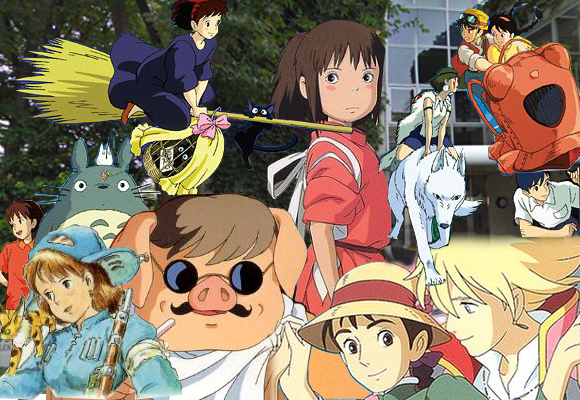 Two Thousand Thirteen was a year of ups and downs for Studio Ghibli with the release two feature-length films (Kaze Tachinu and Kaguya Hime no Monogatari) and the retirement of their greatest director, Hayao Miyazaki.
Two Thousand Thirteen was a year of ups and downs for Studio Ghibli with the release two feature-length films (Kaze Tachinu and Kaguya Hime no Monogatari) and the retirement of their greatest director, Hayao Miyazaki.
Now as the year comes to a close, it might be a fitting time to take a look back at some Ghibli films and learn some things we might not have noticed the first time around in a collection of facts compiled by Japanese website, Naver Matome.
Hayao Miyazaki had already built up some experience directing anime and had won some acclaim with a Lupin III feature by the time he joined with Animage and began working on the Nausicaä of the Valley of the Wind manga which would later become a film.
Both parts of the title can be found elsewhere. There is a Valley of the Winds in Uluru-Kata Tjuta National Park in Australia. Even though “Winds” is pluralized it translates the same in Japanese.
The name “Nausicaä” is taken from a character in Homer’s Odyssey because Miyazaki read somewhere that she liked nature. The rest of Nausicaä’s character is said to be based on the titular character of Mushi Mezuru Himegimi (The Lady who Loved Insects) from the Heian Period collection of short stories Tsutsumi Chunagon Monogatari.
The film was released in 1984 and based on an already popular manga which lent itself to be adapted into the new realm of video games. A few games were designed including this one known as “The Forgotten Nausicaä Game” which was apparently so bad it turned Miyazaki off of video game adaptations from then on.
Most importantly as a piece of Ghibli Trivia, Nausicaä of the Valley of the Wind technically isn’t a Studio Ghibli production since the studio didn’t exist at the time.
Thanks in part to the success of Nausicaä of the Valley of the Wind, Studio Ghibli was born. The name “Ghibli” comes from an Arabic word meaning, “hot air blowing in from the Sahara desert.” Considering his father worked in the aviation industry, Miyazaki probably learned the name from the Italian Ca.309 plane also known as a Ghibli. Also, you can see “Ghibli” printed on the plane of Porco Rosso.
It would seem, however, that Miyazaki either mistook or deliberately corrupted the pronunciation of Ghibli which is meant to have a “G” sound as in “gift” rather than a “J” sound as in “giraffe” as it is in the studio’s name.
The current Studio Ghibli seems like a nice place to work. For example, every Saturday is Massage Day where tired animators are treated to rub-downs as long as needed. There’s also a bar in the company which isn’t really the kind where you spill your drink on someone and then get kneed in the face by a bouncer (or is that just me). Rather, its more of a lunchroom and gathering place to share ideas.
The male to female ratio among staff is nearly equal and the sizes of the restrooms are built to accommodate such a demographic. Also, Miyazaki is a firm believer in shaking things up and will make everyone change seats when starting a new project.
Such luxuries could only come with the string of hits that the studio produced, including the ones below.
Continuing on the name-borrowing tradition “Laputa” is a direct reference to the floating Island from Jonathan Swift’s Gulliver’s Travels. However, some suspect that Swift intentionally named the island after the Spanish slang “la puta” (the whore) made doubly unfortunate as it was revealed to be part of Sheeta’s real name (Lusheeta Toel Ul Laputa).
That’s not all the linguistic fun in the movie. When Pazu and Sheeta say the “Spell of Destruction” they are actually saying the Turkish word for “peace” (barış). After the magical Turkish word is uttered, during the scene where Laputa collapses, eagle-eyed viewers should be able to catch Muska falling among the debris.
Fans of Muska may be pleased to know his legacy lived on after that, through a heftier descendant named Lepka who appeared in the 1978 series Future Boy Conan which Miyazaki worked on.
Going back in time, fans were taken aback by a glimpse of a young (and foxy) Captain Dola in a portrait hanging in her room.
Another little visual treat for careful watchers is the appearance of kitsunerisu (fox-squirrels) also known as that cute little thing that hung out with Nausicaä in her movie.
Laputa was hugely successful for Studio Ghibli in terms of revenue and critical reception, but their next film would prove to be more iconic.
This movie takes place in 1958 and follows two young girls as they interact with magical creatures. Actually the original story was only with the younger sister, Mei but Satsuki was added later to help pad out the story to a full 86 minutes. Satsuki was also originally supposed to be in grade four, but since that was too restricting to what she could do, they bumped her up to the sixth grade.
Speaking of ages, the largest Totoro is 1,302 years old (in 1958), the medium-sized Totoro is 679, and the little one is a spry 109 years of age. The name Totoro is a combination of Miyazaki’s hometown“Tokorozawa” and “troll.” If you happen to visit Tokorozawa in Saitama Prefecture then you can also visit the village of Matsugo just outside of Higashitokorozawa Station.
That can be a little out the way for people in other parts of Japan though. For those in the north, you can always stop by the Totoro tree in Yamagata Prefecture.
In the south you can head to Totoro Station in Miyazaki Prefecture. Believe it or not those names are purely coincidental, but don’t think that’ll stop the locals from using it to their advantage when the opportunity arises.
A more accurate translation of the title to this film might have been Kiki’s FedEx as the word takkyubin used in the Japanese title is a trademark of Yamato Transport Co., one of the biggest couriers in the country.
When production on the film began, one of the first tasks was to try and get Yamato to become a sponsor. Surprisingly, the company took a little cajoling to agree to the then-relatively new studio. It turned out to be a match made in heaven, however, as the company’s logo just happened to be a pair of black cats.
The story follows the young witch, Kiki, as she learns to live on her own and is taken in by a bakery. The name of the bakery is “Guchokipan” which is a double meaning on the Japanese word for bread (pan) and the sounds made when playing rock-paper-scissors in Japanese (Gu/Rock; Choki/Scissors; Pa/Paper). The owner, Osono, was originally supposed to be an ex-biker, but the idea never got off the ground.
Fans of this film and the Detective Conan (Case Closed) anime might already recognize that the voices of Kiki and her love interest Tombo are each the voices of Conan Edogawa and his former self Shinichi Kudo respectively. Another special appearance in this movie is made by Hayao Miyazaki himself…we think. According to a program sold during the theatrical release, Miyazaki does appear in the movie. A few bloggers seem to feel that it’s the guy in the top-right corner of this crowd scene.
There is a resemblance if you take off a few years.
During the story, Kiki meets a young artist named Ursula. When they go to her cabin in the forest we see a painting she did. This painting was actually done by the special needs class of Hachinohe Tatsuminato Junior High School in Aomori Prefecture.
Finally, at the end of the film when Kiki’s parents receive her letter, those with really sharp eyes and knowledge of kanji might have noticed a stroke missing from the “dachi” in “tomodachi.”
She is only 13 though, we can let it slide this one time.
The titular character is a direct Italian translation of the Japanese title Kurenai no Buta who is 36 in the film making his birth somewhere around 1892 – 1893. The image of Porco was said to come directly from Telly Savalas’ Kojak character from the crime drama of the same name.
The film was original commissioned by JAL to be shown to businessmen on their overseas flights. This presented a dilemma for the staff who wanted to put underlying themes of redemption into the story but also make it light enough for exhausted salesmen to get into. This goal got even more complicated as a real war broke out in the same region the story takes place at the time of its release.
Although in the end of the movie Porco appears to be reverted to his human form, Miyazaki said, “after becoming human he soon reverts to becoming a pig. Ten days later he shows up at Gina’s to eat.”
This coming-of-age tale was based on a manga by Aoi Hiragi. Much of the background artwork from the manga was used in the anime version depicting Tama and Musashino cities in Tokyo.
During a scene where Seiji leaves for Italy, when Shizuku takes a train, a building can be seen with the Japanese title, “Mimi o Sumaseba” written on it.
Actually, references to other Ghibli movies past and future pop up in the film. For example, Porco Rosso’s name is carved into a grandfather clock.
A Totoro book is sitting on the shelf in the library. It might just be about the station in Miyazaki Prefecture though. Also a couple little Totoro’s are in the background when the Baron is made.
Granted that’s just a generic witch, but you figure it’s got to be a reference to Kiki.
Outside the window of a train are Rikako and her father from Ghibli’s made-for-TV movie Ocean Waves on the opposite platform.
And you can even see Seiji reading a copy of The Mysterious Town Across from the Fog, the book that was supposed to have been made into a movie by Ghibli instead of Spirited Away.
This movie starts off with the young Prince Ashitaka whose name is based on the god Ajisukitakahikone, who is enshrined in the six Shrines of Ou in Shimane Prefecture. The forest spirit is based on Yatsukamizuomitsuno, the main diety of Nagahama Shrine also in Shimane. However, at night the forest spirit manifests itself as a daidarabotchi, a legendary Japanese monster (yokai) large enough to lift mountains and create lakes with its footprints.
It also appears to have been based on Telly Savalas’ Kojak character.
The wolf-girl San’s name came from an animation project Miyazaki was working on in 1980 called San No Hime (The Third Princess). The forest spirit’s forest was inspired by the lush greenery of Shirataniunsuikyo on Yakushima Island.
When the movie was released in theaters in Japan, its tagline was written by Japanese Renaissance man Shigesato Itoi who you might know as the creator of the Earthbound/Mother games for Nintendo. The tagline was “Ikiro.” (Survive.).
Now that might seem like he was phoning it in, but actually 50 other taglines of his were rejected before settling on that one word slogan. Sometimes less is more.
As briefly mentioned previously, Miyazaki originally intended to make an animated version of the Sachiko Kashiwaba book Kiri no Mukou no Fushigina Machi (The Mysterious Town Across from the Fog). When that project fell through he created this original story, but some say parts of the Kashiwaba atmosphere can be seen in it.
In the story, young Chihiro Ogino while out driving with the family in a sweet Audi A4 1.8T Quattro, runs into some spirits and ends up working at a supernatural sento (public bathhouse). She encounters twin sisters Zeniba and Yubaba whom by taking the first kanji of each of their names you can spell “sento.”
Speaking of names, the pair of kanji for Chihiro means “Something extremely long, but also deep enough that it’s difficult to measure”such as an ocean, valley, or even a story.
This film was based on a novel by Diana Wynne Jones, but takes some rather large departures from the source material. The full-scale war that breaks out in the anime never occurs in the original book. Miyazaki said he added it because he wanted “to depict love in battle.”
In Miyazaki’s original storyboards for the movie, “the war doesn’t end immediately” is written next to the last box.
Miyazaki’s version of the castle is also more of an almost-organic clump of pipes, turrets, scaffolding and legs. To create the sound of the castle, Ghibli hired a team of carpenters, filled the studio with tools and asked them to do what they do best.
At the end of the film, Howl’s castle is seen flying. The original book by Jones was actually the first in a trilogy with the second titled, Castle in the Air.
Of course, there are many more Studio Ghibli movies we could talk about. We haven’t even gotten into the Isao Takahata ones which some might argue are the superior films. We could go on but don’t want this article to become more of a chihiro than it already has.
Top Image/ Headers: Amazon 1, 2, 3, 4, 5, 6, 7, 8, 9, Google Maps, Edited by RocketNews24
Valley of Winds Image: Wikipedia – Sterry2607
Dola Image: thx_2005
Lepka Image: Amazon
Kitsunerisu Images: Zatsu Gakuya
Totoro Tree Image: iYamagata
Tototo Station Image: Google Maps
Miyazaki Kiki Image: Kohachan Blog
Painting: Aomori Prefetural Government
Letter Image: Eiga Trivia
Kojak Image: Wikipedia
Whisper of the Heart Ghibli References: thx_2005
Daidarabotchi Image: Wikipedia – Strange Arrow
Video: YouTube – uso8oocom, movie0786, DisneyMovies、Fifi Un

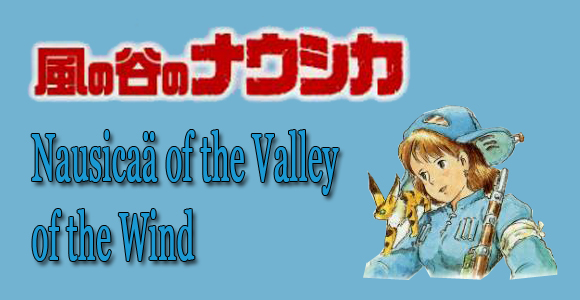
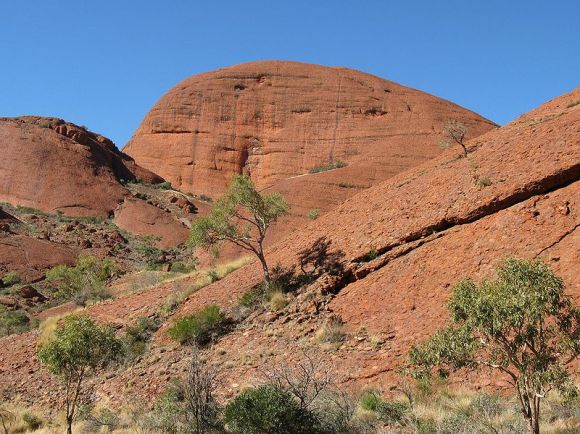

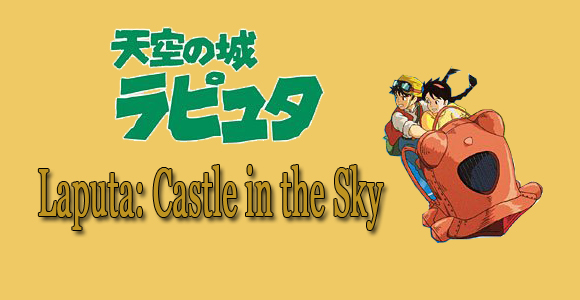
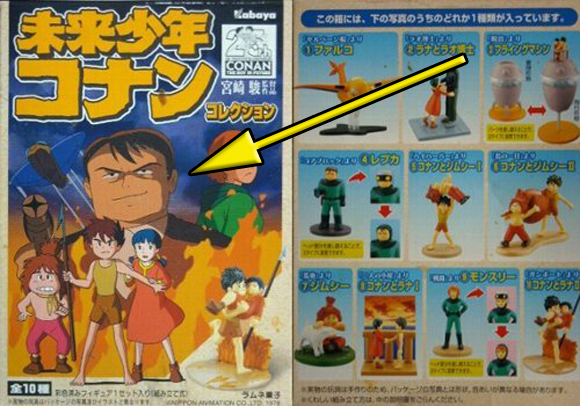
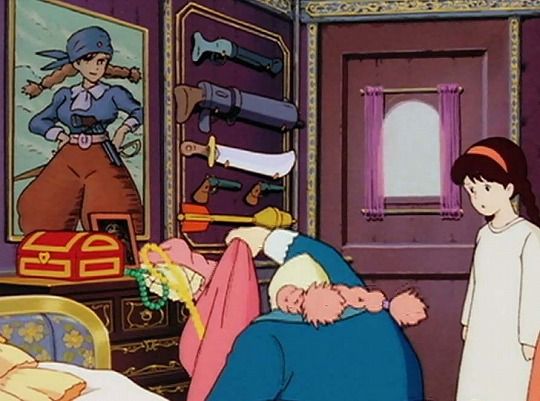
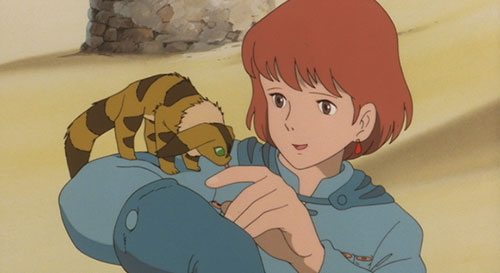
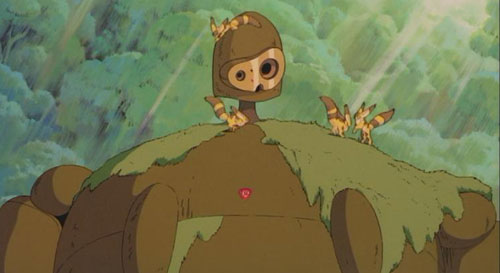
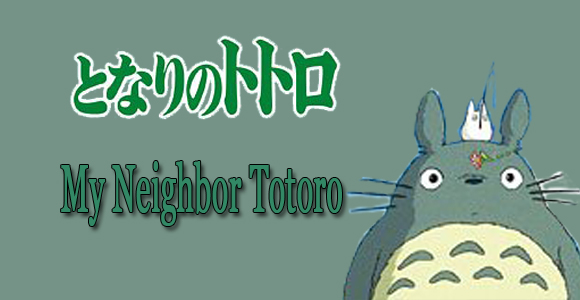

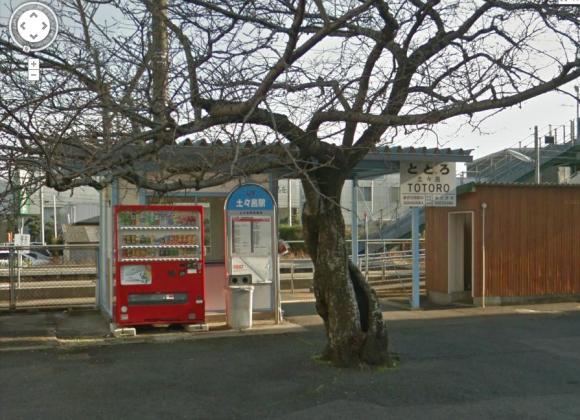
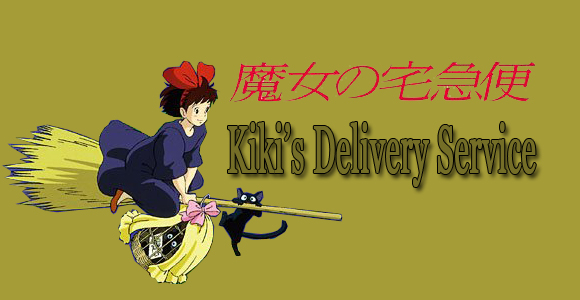
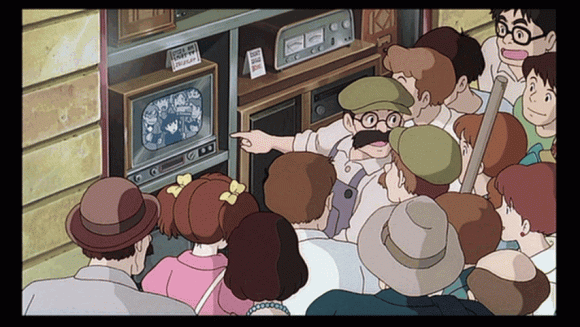
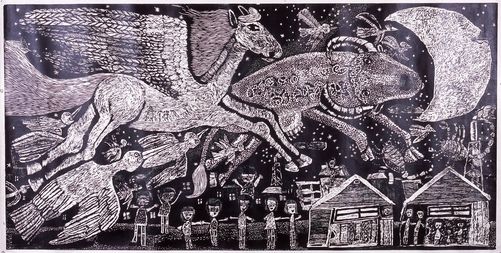
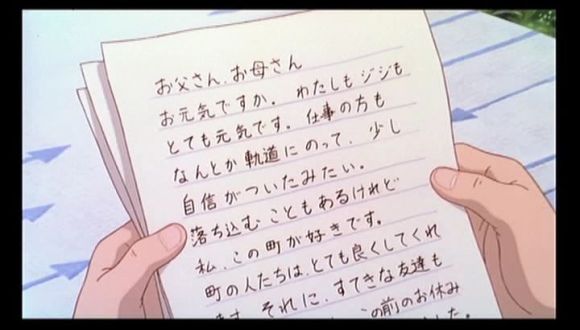
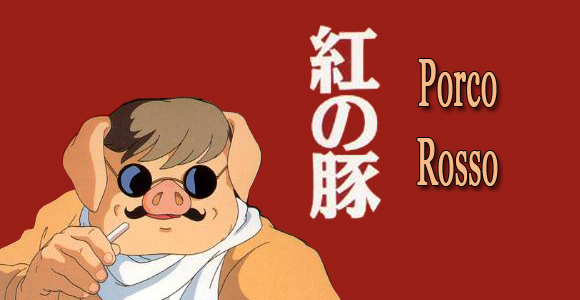
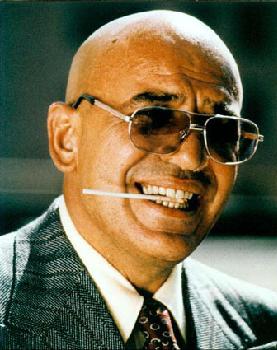
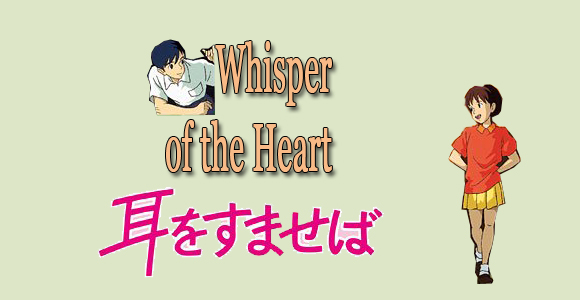
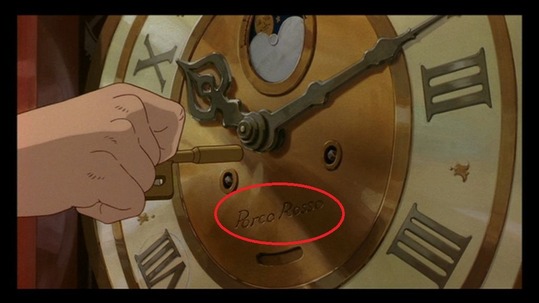
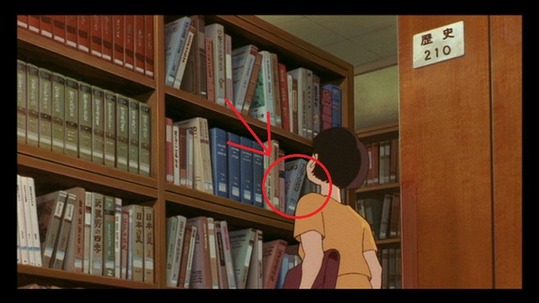
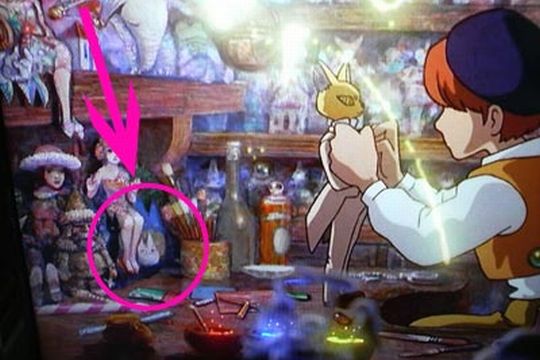
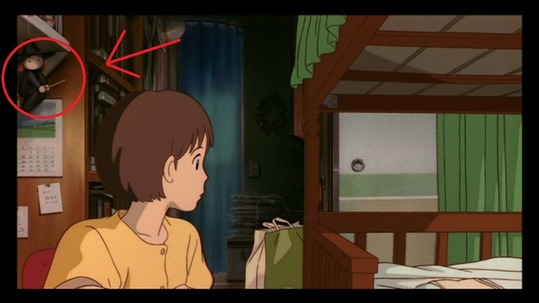
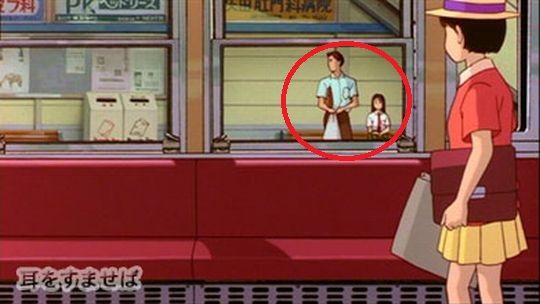
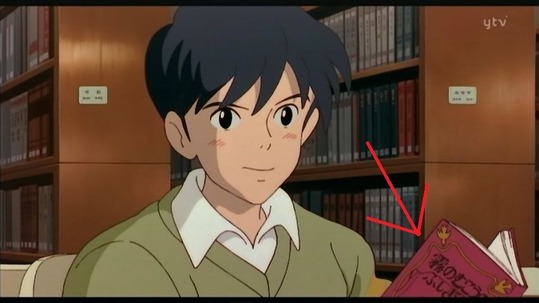

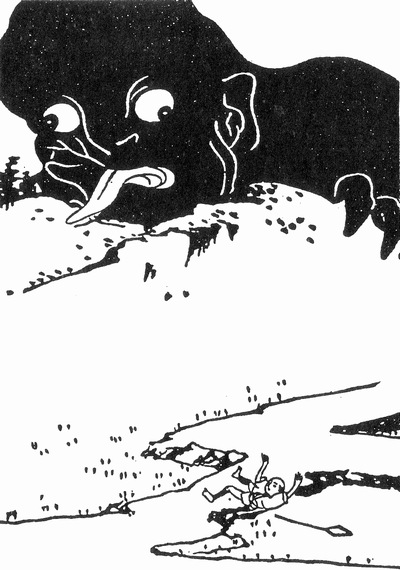
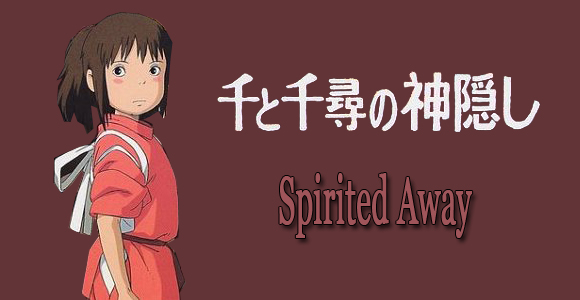

 10 best Studio Ghibli anime, as picked by Japanese fans– Different ages have different answers
10 best Studio Ghibli anime, as picked by Japanese fans– Different ages have different answers Hayao Miyazaki Working on Proposed New Anime Feature Film
Hayao Miyazaki Working on Proposed New Anime Feature Film Totoro has a sequel? Thousands of Japanese Twitter users shocked to learn of Ghibli follow-up
Totoro has a sequel? Thousands of Japanese Twitter users shocked to learn of Ghibli follow-up Ghibli Park: Opening date, first photos, and a new promo video produced by Studio Ghibli!
Ghibli Park: Opening date, first photos, and a new promo video produced by Studio Ghibli! Studio Ghibli releases 250 more free-to-download/use images from five films, and Totoro is here!
Studio Ghibli releases 250 more free-to-download/use images from five films, and Totoro is here! Foreigner’s request for help in Tokyo makes us sad for the state of society
Foreigner’s request for help in Tokyo makes us sad for the state of society Seaside scenery, history, and so many desserts on Yokohama’s Akai Kutsu【Japan Loop Buses】
Seaside scenery, history, and so many desserts on Yokohama’s Akai Kutsu【Japan Loop Buses】 Red light district sushi restaurant in Tokyo shows us just how wrong we were about it
Red light district sushi restaurant in Tokyo shows us just how wrong we were about it Japanese city loses residents’ personal data, which was on paper being transported on a windy day
Japanese city loses residents’ personal data, which was on paper being transported on a windy day Harajuku Station’s beautiful old wooden building is set to return, with a new complex around it
Harajuku Station’s beautiful old wooden building is set to return, with a new complex around it Japan’s summertime towelket pillowcases are even better with the addition of Ghibli stars【Photos】
Japan’s summertime towelket pillowcases are even better with the addition of Ghibli stars【Photos】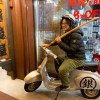 A Gintama fan’s emotional 19-year journey to buy a proper Lake Toya bokuto wooden katana【Pics】
A Gintama fan’s emotional 19-year journey to buy a proper Lake Toya bokuto wooden katana【Pics】 Anime girl English teacher Ellen-sensei becomes VTuber/VVTUber and NFT
Anime girl English teacher Ellen-sensei becomes VTuber/VVTUber and NFT Pokémon Sleep camping suite and guestrooms coming to Tokyo Hyatt along with giant Snorlax burgers
Pokémon Sleep camping suite and guestrooms coming to Tokyo Hyatt along with giant Snorlax burgers McDonald’s new Happy Meals offer up cute and practical Sanrio lifestyle goods
McDonald’s new Happy Meals offer up cute and practical Sanrio lifestyle goods Japanese ramen restaurants under pressure from new yen banknotes
Japanese ramen restaurants under pressure from new yen banknotes French Fries Bread in Tokyo’s Shibuya becomes a hit on social media
French Fries Bread in Tokyo’s Shibuya becomes a hit on social media Studio Ghibli releases new action figures featuring Nausicaä of the Valley of the Wind characters
Studio Ghibli releases new action figures featuring Nausicaä of the Valley of the Wind characters New private rooms on Tokaido Shinkansen change the way we travel from Tokyo to Kyoto
New private rooms on Tokaido Shinkansen change the way we travel from Tokyo to Kyoto Tokyo Tsukiji fish market site to be redeveloped with 50,000-seat stadium, hotel, shopping center
Tokyo Tsukiji fish market site to be redeveloped with 50,000-seat stadium, hotel, shopping center Beautiful Ghibli sealing wax kits let you create accessories and elegant letter decorations【Pics】
Beautiful Ghibli sealing wax kits let you create accessories and elegant letter decorations【Pics】 Studio Ghibli releases Kiki’s Delivery Service chocolate cake pouches in Japan
Studio Ghibli releases Kiki’s Delivery Service chocolate cake pouches in Japan New definition of “Japanese whiskey” goes into effect to prevent fakes from fooling overseas buyers
New definition of “Japanese whiskey” goes into effect to prevent fakes from fooling overseas buyers Our Japanese reporter visits Costco in the U.S., finds super American and very Japanese things
Our Japanese reporter visits Costco in the U.S., finds super American and very Japanese things All-you-can-drink Starbucks and amazing views part of Tokyo’s new 170 meter-high sky lounge
All-you-can-drink Starbucks and amazing views part of Tokyo’s new 170 meter-high sky lounge More foreign tourists than ever before in history visited Japan last month
More foreign tourists than ever before in history visited Japan last month New Pokémon cakes let you eat your way through Pikachu and all the Eevee evolutions
New Pokémon cakes let you eat your way through Pikachu and all the Eevee evolutions Disney princesses get official manga makeovers for Manga Princess Cafe opening in Tokyo
Disney princesses get official manga makeovers for Manga Princess Cafe opening in Tokyo Sales of Japan’s most convenient train ticket/shopping payment cards suspended indefinitely
Sales of Japan’s most convenient train ticket/shopping payment cards suspended indefinitely Sold-out Studio Ghibli desktop humidifiers are back so Totoro can help you through the dry season
Sold-out Studio Ghibli desktop humidifiers are back so Totoro can help you through the dry season Japanese government to make first change to romanization spelling rules since the 1950s
Japanese government to make first change to romanization spelling rules since the 1950s Ghibli founders Toshio Suzuki and Hayao Miyazaki contribute to Japanese whisky Totoro label design
Ghibli founders Toshio Suzuki and Hayao Miyazaki contribute to Japanese whisky Totoro label design Doraemon found buried at sea as scene from 1993 anime becomes real life【Photos】
Doraemon found buried at sea as scene from 1993 anime becomes real life【Photos】 Tokyo’s most famous Starbucks is closed
Tokyo’s most famous Starbucks is closed One Piece characters’ nationalities revealed, but fans have mixed opinions
One Piece characters’ nationalities revealed, but fans have mixed opinions We asked a Uniqlo employee what four things we should buy and their suggestions didn’t disappoint
We asked a Uniqlo employee what four things we should buy and their suggestions didn’t disappoint Princesses, fruits, and blacksmiths: Study reveals the 30 most unusual family names in Japan
Princesses, fruits, and blacksmiths: Study reveals the 30 most unusual family names in Japan Top 5 Studio Ghibli films Japanese viewers are tired of watching
Top 5 Studio Ghibli films Japanese viewers are tired of watching SoraReview: Mary and the Witch’s Flower, the newest anime from Studio Ghibli director Yonebayashi
SoraReview: Mary and the Witch’s Flower, the newest anime from Studio Ghibli director Yonebayashi The Place Where Totoro Was Born: New Studio Ghibli book includes art by Hayao Miyazaki’s wife
The Place Where Totoro Was Born: New Studio Ghibli book includes art by Hayao Miyazaki’s wife Italian jazz pianist unleashes inner Ghibli fanboy, releases anime theme song album
Italian jazz pianist unleashes inner Ghibli fanboy, releases anime theme song album Totoro sequel anime, Mei and the Baby Catbus, to screen at Ghibli theme park this fall
Totoro sequel anime, Mei and the Baby Catbus, to screen at Ghibli theme park this fall Studio Ghibli releases watercolour greeting card collection featuring artwork from anime movies
Studio Ghibli releases watercolour greeting card collection featuring artwork from anime movies Studio Ghibli producer dishes the dirt on Hayao Miyazaki, Your Name, and their next big project
Studio Ghibli producer dishes the dirt on Hayao Miyazaki, Your Name, and their next big project British newspaper ranks the best Studio Ghibli films and reader passions flare
British newspaper ranks the best Studio Ghibli films and reader passions flare Ghibli producer provokes backlash for comment regarding abilities of women to direct anime
Ghibli producer provokes backlash for comment regarding abilities of women to direct anime Miyazaki Blu-ray collection to be released with special bonus content but won’t come cheap!
Miyazaki Blu-ray collection to be released with special bonus content but won’t come cheap! Hayao Miyazaki’s Nausicaä of the Valley of the Wind set to become live-action Japanese kabuki play
Hayao Miyazaki’s Nausicaä of the Valley of the Wind set to become live-action Japanese kabuki play Anime fans pick which Ghibli heroine they’d like to have as a girlfriend
Anime fans pick which Ghibli heroine they’d like to have as a girlfriend The little-known inspiration for Princess Mononoke: A manga about a tribe in Papua New Guinea
The little-known inspiration for Princess Mononoke: A manga about a tribe in Papua New Guinea Chinese poster for Totoro’s first theatrical release in country has a beautifully subtle secret
Chinese poster for Totoro’s first theatrical release in country has a beautifully subtle secret The secret behind this mysterious Studio Ghibli x Pixar image
The secret behind this mysterious Studio Ghibli x Pixar image
Leave a Reply